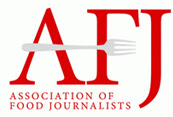
Four members of the Association of Food Journalists journeyed to Samuel J. Green Charter School, which is in the middle of the gritty neighborhood where rapper Lil Wayne grew up. Attached to the school is the first Edible Schoolyard outside of the original founded by Alice Waters in Berkeley. The Green school had been taken over by First Line schools 10 days before Katrina. During the storm, the school took on eight feet of water in the cafeteria. Also before the storm, the school was a failing school for 20 straight years and was crammed with 650 students. Flash forward to now, and the school has a new cafeteria kitchen and a new teaching kitchen thanks mostly to the Ruth Fertel Foundation and the Emeril Lagasse Foundation. The school's garden doesn't grow enough food to supply the school's food needs. However, according to Edible Schoolyard director Donna Cavato, it was uphill work negotiating with food supplier Sodexho for nutritional foods and five daily servings of fruits and vegetables. The kids and their parents learn how to cook and to make things from the garden products. In fact, the kids sell soap, loofahs, pickled okra and peppers and other items they make at the monthly Freret Street market. The school is K through 8. Two grades a week rotate through cooking and gardening classes. A lot of the 450 kids in the school get 80 percent of their daily calories from the breakfast, lunch and two snacks they get at school. The cafeteria tables have fresh cut flowers and water pitcher so kids can learn sharing and get hydrated. They also make and eat food from the cultures they are studying. For example, Aztec pumpkin soup and quinoa pilaf. There are after school programs for kids who are below grade level in being business entrepreneurs.
After Katrina, when the school administration discussed their plans for the garden and improvements to the school, most of the parents were skeptical. Like a lot of school systems, New Orleans was long on promising and short on delivering through the years. When the garden went in and the outdoor classroom started being built, some of the parents wept. Cavato says that a lot of the parents are in poverty and had poor education, but you don't need a college degree to cook or garden.
The kids compost, use dishes and silverware to cut down on waste and the first graders use washcloths instead of napkins and help launder them. The round tables in the cafeteria encourage socializing and teamwork. As Cavato says, "If you have a place at the table, you have a place anywhere."
-- Claudia Perry, "official" AFJ conference blogger
















